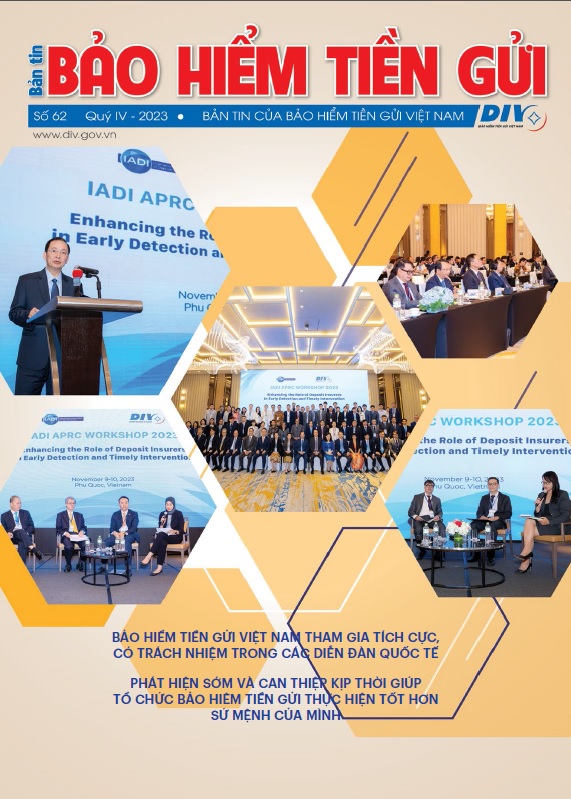The debts trading market in general and the NPLs trading market in particular are defined as a place where activities of exchanging, buying and selling debts or “rights to recover debts” in the market of entities in the economy to avoid financial risks and increase liquidity for enterprises as well as CIs take place.
In Vietnam, there is no debts trading market which operates properly according to the market principle. While a lot of entities have demands for selling debts, too few entities buy debts, which causes the progress of NPL resolution not to be as good as expected. Clearly aware of the importance of the debts trading market, the Party and the State have also paid a lot of attention to setting up the legal framework for debts trading activities towards the establishment and development of the debts trading market in Vietnam. The establishment and development of the debts trading market have been making very significant contribution to the development of the financial market in general, and the financial stability and safety of the CIs system and the system of enterprises in Vietnam.
The debts trading market is still primitive
In Vietnam, after nearly 10 years of operation, the Vietnam’s Asset Management of CIs (VAMC) Agency is becoming an effective tool in buying, selling, resolving NPLs of the CI system. In the period from August 15, 2017– when the Resolution 42/2017/QH14 of the National Assembly on piloting resolution of NPLs of CIs (the Resolution 42) officially came into effect till now, the VAMC has bought about 114,200 billion of NPLs by special bonds. Debts bought by VAMC at market prices reached about 11,822 billion dongs.
Besides, one of the greatest contributions of VAMC in resolving NPLs is the development of a debts trading market, although the legal framework related to the debts trading market has been initially established. With a lot of efforts, in 2021, the VAMC set up the VAM debts exchange. Till now, the total NPLs listed in the VAMC’s debts exchange achieved over 30,000 billion dongs, making significant contribution to establishing and developing the debts trading market in Vietnam. Therefore, operations of the debts trading market in Vietnam have initially had positive transformation, contributing to promoting the process of debts resolution of the Banking sector in particular and the economy in general.
However, in reality, the debts trading market in Vietnam is still primitive, there are a lot of problems to be solved. That is the inconsistent, problematic, inadequate and weak legal framework for operations of the debts trading market.
The current legal framework only allows 2 methods of debts trading: direct negotiation and auction; there is a lack of a basis for loan valuation and a mechanism for information disclosure, etc. On the other hand, the majority of NPLs of CIs were guaranteed by real estate, but in our country there is no real estate market in a proper meaning, lands are still owned by the State, not to mention that completing legal procedures for real estate is extremely complicated and difficult.
In addition, Vietnam has not set up a base system of loan valuation. This has caused the situation by which sellers, especially commercial banks with a large proportion of State owned capital, dare not to sell debts due to worries that the price levels are objective although international experiences have shown that the transaction prices are always lower than the book value of debts.
The market has not attracted a variety of entities to participate in, resulting in few number of entities. The Resolution 42 which allows other institutions to participate in NPL trading (but there are no detailed regulations on inhering rights, obligations regarding collaterals when those institutions are not CIs) has restricted entities to join. There is a lack of professional brokers, independent asset appraisers, other financial institutions (insurance companies, investment funds, retirement funds, securities companies, etc…). Supporting organizations like brokers, consultants, appraisers, credit rating organizations, etc… have not developed yet. Goods in the debts trading market are not diversified. The scale of the debts trading market is still modest against other countries in the region. The secondary market hardly exists. Debts valuation techniques and methods are still lacking market forces. The information technology infrastructure has a lot of shortcomings, there is no close information connection among market participants, etc.
Especially, in the context the global economy for the recent years has experienced a lot of complicated ups and downs and is forecasted to be unpredictable in the coming time, adverse impacts from the Covid-19 pandemic and political disorder and armed conflicts in some regions in the world have affected the financial situation of many enterprises, deteriorating ability to repay debts of customers, resulting in the probability of increasing NPLs of CIs in the coming time.
Therefore, the promotion of a debts trading market in Vietnam will provide very great support to NPL resolution of the whole banking system, therefore NPLs can be quickly resolved so that they will not become “ulcers” of the economy, thereby freeing up capital flows for the economy.
Gradually stepping up the establishment of a centralized debts trading market
According to experts, the potential of debts trading in Vietnam is very great, when the supply is quite abundant (the debts outstanding by December 2022 was 12 million billion dongs, accounting for 134% of GDP). The NPLs may increase in 2023. However, Vietnam has not set a common standard of tradeable debts. While on the demand side, a strong development of the corporate bond market has shown potential in term of demand for such products as securitized debts. People pay more attention to channels of financial investment when financial income and knowledge have been improved; Vietnam’s stock market (including derivatives) has developed quite quickly, etc.
In some countries with successful debts trading market like the US, Korea and China, one of factors leading to the development of the debts trading market is that the legal framework has strict, detailed regulations for debts trading activities; standardized regulations on debts and collateral valuation. Goods in the market are various, including those which encouraged private investors to participate in the market. Another important condition is to develop a secondary market.
The Strategy on the development of the Vietnamese banking sector to 2025, with orientation to 2030, which was approved according to the Decision 986/QD-TTg dated August 18, 2018 by the Prime Minister, pointed out the objective is to “bring NPLs of the whole CI system below 3% in 2025”. To achieve that objective, one of the significant solutions is to develop a debts trading market in Vietnam.
In experts’ opinions, it is necessary to complete a synchronous legal framework, which is the Decree on the debts trading market at first. It is necessary to supplement market participants which include domestic and foreign private investors; extend the method of debts trading including debts securitization. Especially, it is essential to soon legalize the Resolution 42 based on receiving, revising obstacles and the demand in the coming time. Regulations on participation of private investors (including foreign ones) need to be consistent, synchronous when amending the Law on land, houses, real estate transactions.
A dynamic market with willing sellers, a strong legal framework, synchronized regulations, no contradictions; simplifying the procedure for coercion of collateral, etc. are factors which have positive impacts on the market, attracting investors to participate in the market. Together with that, Vietnam needs to remove some obstacles to improve the effectiveness of the market like difficulties related to asset transfers; unclear points related to returning evidence in criminal cases, etc.
Besides, it is necessary to promote of the participation of market participants, allowing the establishment of the Association of debts trading enterprises; trustee organizations for foreign investors, valuation companies, credit rating institutions, brokerage companies, etc.
Developing the secondary market, increasing liquidity, including considering establishing companies which re-grant loans guaranteed by collaterals. At the same time, developing financial infrastructures (information – data, accounting, auditing, clearing settlement, credit rating, etc.)
In order for the VAMC to go together with development of the banking system, with its role of a special instrument of the State in resolving NPLs and ensuring safe and sustainable development of the CI system, at the same time, towards its central role of promoting the development of the debts trading market, it is necessary to improve resources for VAMC in terms of capital, technology, human resources and continue completing legal procedures for buying, selling and resolving debts of VAMC as well as CIs.
It is necessary for CIs to operate more effectively than debts resolution centers/divisions and/or AMCs.
At the macro level, it is necessary to speed up the process of restructuring CIs, State-owned enterprises.



























